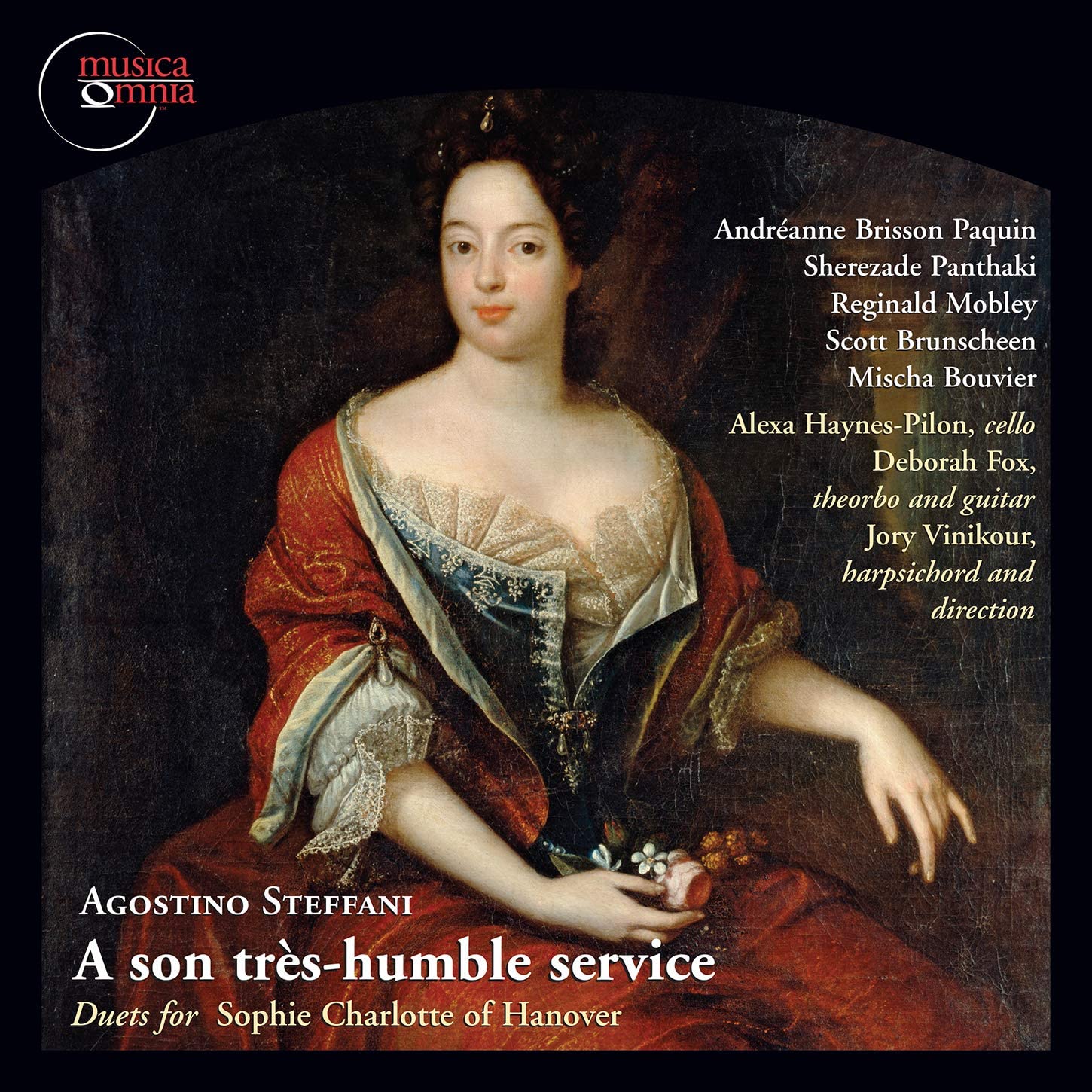Duets for Sophie Charlotte of Hanover
Various singers and continuo, Jory Vinikour (hpd), dir
89:22
musica omnia mo0802 (2 CDs)
The words in the heading are taken from the dedication made in 1702 by Agostino Steffani to Queen Sophie Charlotte in Berlin in a letter accompanying two volumes of his chamber duets. Exceptionally cultured and herself a singer and keyboard player sufficiently accomplished to take the role of continuo harpsichordist in Giovanni Battista Bononcini’s Polifemo, produced at court in the same year, Sophie Charlotte had been acquainted with Steffani for many years. The unusually close relationship between the two, fully discussed in the exceptionally detailed booklet notes by Steffani scholar Colin Timms and probably facilitated by the fact that the ubiquitously talented Steffani was also a diplomat, is evidenced in a number of surviving letters.
The duets are scored for a variety of vocal combinations. Unlike the alternation of recitative and aria familiar from the slightly later chamber duets of Scarlatti and Handel, they take a variety of flexible forms, all through-composed. Often the structure will consist of some kind of ritornello or rondeau scheme, sometimes, as in ‘Ah che l’ho sempre detto’ for soprano and tenor, returning at the end to the brief opening da capo aria to complete a cyclical form. This incidentally is one of several instances where the text printed in the booklet does not make clear what is repeated. In their fluidity of form, the duets bear a relationship to both earlier 17th century opera and the later madrigal. The latter are also at times evoked by the frequent use of dissonance and chromaticism in vocal writing that is always cajoling the voices into obedient imitation or closely intertwined counterpoint. That of course is appropriate for texts that invariably deal with the vicissitudes of love in either serious or playful mood. Unique among the eleven duets recorded here is the touching final duet, ‘Io mi parto, o cara vita’, scored for soprano and tenor and cast in dialogue form between two lovers on parting. The overall quality of the duets is extremely high, some, such as ‘Pria ch’io faccia altrui palese’ for two sopranos, being sensuously lovely.
Emanating from the US, the set is a follow up to an earlier collection under the direction of harpsichordist Jory Vinikour that I reviewed previously for EMR. There are several differences in the vocal line-up, only Canadian soprano Andréanne Brisson Paquin and bass Mischa Bouvier being common to both recordings. There is now a second soprano, Sherezade Panthaki, who combines most effectively with Paquin in three duets. Reginald L. Mobley, a stylish countertenor and Scott J. Brunscheen’s light lyric tenor complete the roster. Despite these changes, the performances remain very much on a par with those on the earlier CD. That is to say they are all pleasingly sung, though ornaments are often poorly articulated and there are too few of them, without the singers ever suggesting that they have found anything in the text to engage them. True the texts (one of which is by Sophie Charlotte) are all conceits, often, in keeping with the end of the 17th century, pastoral in nature, but we are told over and over again in vocal treatises of the period that realisation of the text is paramount. Highly emotional words such as ‘lasciami’ and ‘tradirà’ must evoke vocal acting if the duets are to come fully to life and move the listener. Here that hardly ever happens. The continuo accompaniment is capable if a little unimaginative, which has the advantage of not detracting from the singers.
These performances are so well-intentioned that I would love to give them higher praise. The fact is however that this is music that is deceptively simple, needing as it does art that transcends artifice.
Brian Robins
